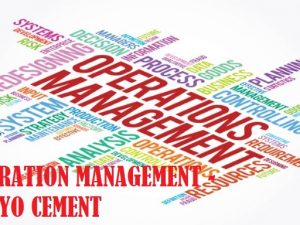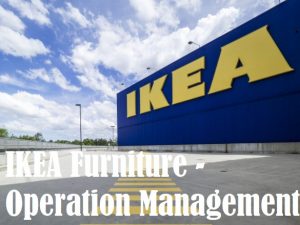Description
Table of Contents
Executive summary ……………………………………………………………………………………………………………………. 3
1. Introduction …………………………………………………………………………………………………………………………… 4
2. Retailing …………………………………………………………………………………………………………………………….. ….4
2.1 Core competencies of Zara ……………………………………………………………………………………………………… 4
2.2 Operational Management issues …………………………………………………………………………………………….. 6
2.3 How Zara’s operations strategy contributes their strategic success …………………………………………….. 6
3. Design ……………………………………………………………………………………………………………………………………. 7
3.1 Why other firms take longer to go from design to delivery. ………………………………………………………… 7
3.2 How to use forecasting and planning method to overcome these issues. …………………………………….. 8
3.3 Operation resource based decisions define Zara’s product development strategy. ……………………….. 9
4. Production / Sourcing. ……………………………………………………………………………………………………………. 9
4.2 Zara’s capacity strategy. ……………………………………………………………………………………………………….. 10
4.3 Zara’s quality management strategy ………………………………………………………………………………………. 11
5. Distribution ………………………………………………………………………………………………………………………….. 12
5.1 Speed as overriding concern for Zara logistics ………………………………………………………………………… 12
5.2 How the operation resources of Zara be structured to meets its market requirements. ………………. 12
5.3 Supply chain risks of Zara’s distribution strategy ……………………………………………………………………. 13
6. Zara online and the future ……………………………………………………………………………………………………… 13
6.1 Business operations decision making, policies and strategies …………………………………………………… 13
6.2 Zara’s future process technology strategy ………………………………………………………………………………. 14
7. Conclusion ……………………………………………………………………………………………………………………………. 15
References ……………………………………………………………………………………………………………………………….. 16
Executive summary
Zara fashion is a fashion retail business which is focus on women, men and children apparel. They believe that fashion culture has no boundaries. Zara is an oldest and biggest brand of Inditex which is fashion company located in Spain.
This report comprehensively analysis the operation of the Zara fashion in five aspects: retailing, design, production, distribution and the future of the Zara. This report mainly consider core competencies of the Zara fashion and how Zara achieve for those core competencies. Further this report discuss how Zara’s operation strategy contribute to success of the business strategy. And also Zara’s capacity strategy, quality management strategy and distribution strategy is comprehensively discussed in the report. Performance of Zara has been compared with other main competitors and possible risks have been identified in this report. Finally it is identified areas which Zara need to be developed in technology aspects.
1. Introduction
Zara is a fast fashion retailer based in Artexio, Spain which was founded in 1963 by Amancio Ortego. By 2013, Zara had eight different brands such as Zara Homes, Bershka, Massimo Dutti, Stradivarius, Pull & Bear, Oysho and Uterque. Zara fashion has 6,104 stores in 86 countries and working more than 128,000 employees. In 2012, company had consolidated revenue of € 2.3 billion. Each of these brands are responsible for their stores, ordering process, production, designing, subcontractors, suppliers and distribution. Corporate services such as finance and legal handle by head office. However all functions follow a similar operating model that focus on speed to market. Zara is able to offer premium fashion at affordable price because its operating model applies control over the entire apparel industry. Zara’s vision is to be number one fashion retailer. And their mission statement is “the world is getting smaller; we want the whole world to dress style, class and experience unique designs weekly.
Strategy of Zara based on three main factors: quality products, reasonable prices and very short response time. Functions such as design, communication and marketing are centralized in head office in Coruna, allowing cost control and responsiveness. According to Porter’s generic strategy, Zara follows best cost strategy. Best cost strategy refer that offering customers better value for money by focusing on both affordable price and upscale difference. (John & Harrison,2014)
2. Retailing
2.1 Core competencies of Zara
Core competencies are the main strength and strategic advantages of the business, which is the collective learning in the organization, especially the capacity to coordinate diverse production skills. (Hamel & Prahalad, 1990). VRIO framework is used to assess core competencies of the company and VIRO framework focus on the value (V), Rarity (R), Imitability (I) and Organizational aspects of resources and capabilities (O) (Organized to be exploited) leading to competitive advantage.
Five main core competencies can be identified in Zara’s retailing section.
Unique in store inventory storage.
Fast responsive and powerful designer team linked with store managers.
A pleasant, commodious and neat store environment.
Time compressed production process.
Fast fashion brand image.





